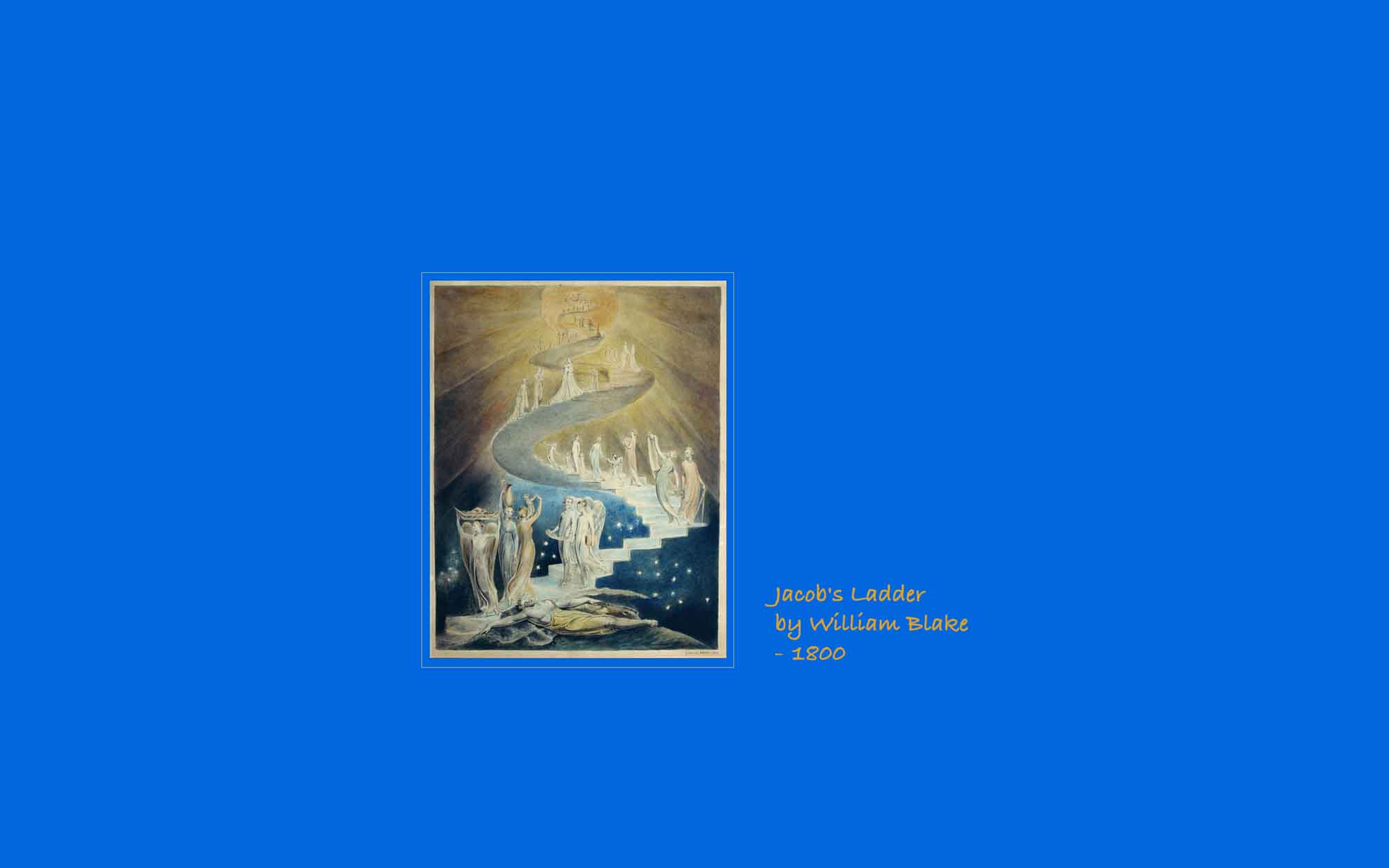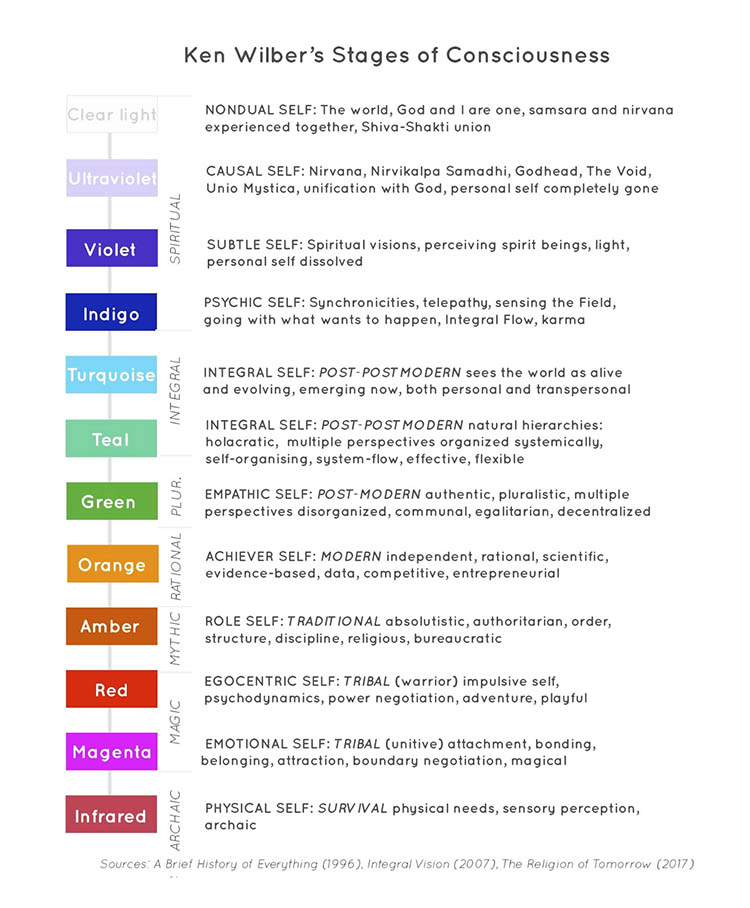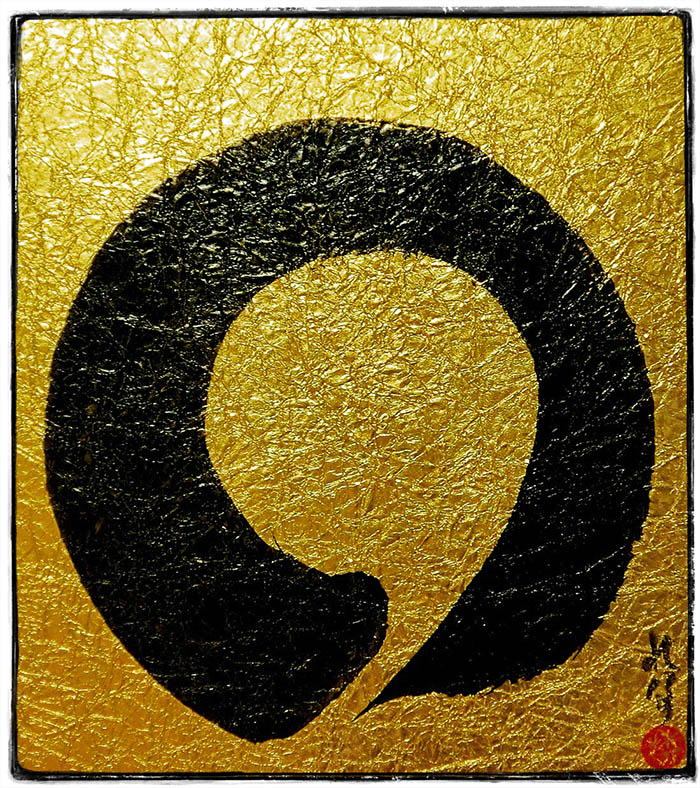Up the Jakob’s Ladder into the Heavens
~~~
The ascent of human consciousnes
You may know the strange story of Jacob in the Old Testament, Book of Genesis, Chapter 28.
It goes like that (my words):
Jacob, the future founder of Israel, grandson of Abraham is on the run. He just tricked his brother Esau out of his birthright and blessing, and now he’s fleeing into the desert. At night, alone and exiled, he lays his head on a stone, and “dreams”, lets call it a vision.
In the dream, he sees a ladder or stairway reaching from earth to heaven, with “angels ascending and descending”, and God standing at the top, renewing the sacred vow with him. He wakes up stunned and says, “Surely the Lord is in this place, and I knew it not… This is none other than the house of God, and this is the gate of heaven.”
This “ascent and descent” up the ladder to heaven, bridge between Human and Divine, is seen as a symbol of the vertical axis of spiritual development, one that recurs across various mystical traditions.
We can see it in the KABBALAH — The “Tree of Life”, which is a structured cosmology of 10 emanations from the Infinite (Ein Sof) to the material world. They’re often visualized as a vertical ladder of consciousness.
In Christian Mysticism, St. John Climacus wrote a 7th-century spiritual manual titled “The Ladder of Divine Ascent”, which became central in Eastern Orthodox monasticism.
Gnostic Scripture speaks of “The Ascent Through the Spheres” and in Hinduistic Tantric and yogic systems, the spine is a vertical ladder, with chakras as rungs.
When Kundalini rises, it awakens each chakra, culminating in the thousand-petaled lotus at the crown, representing union with the Absolute. It is the description of the ascent of consciousness thru the stages from the lowest to the highest consciousness level.
~~~
I have elaborated on that broader context because I wish to introduce a modern day map that lays out the development of human consciousness thru 3 fundamental Tiers/Realms, passing thru 12 Stages or Altitudes of Consciousness itself.
The map is the based on the works of Ken Wilber, Jean Gebser, Don Beck and Aurobindo. All of them modern day researchers of consciousness and human development.
I find this map incredible helpful to understand the difference in consciousness of people I encounter and also understand better my own development in the course of my lifetime. It also helped me a lot to be more tolerant and empathic to people I could not understand at first or tolerate, because they had such different values and attitudes than my own.
So I am truly grateful for those researchers who thought so deep and thorough about a human being’s developmental stages.
The whole spectrum from way down in raw survivalist materialism up to the highest levels of spiritual realization of Oneness.
May this also help you to understand your self better and have greater understanding and empathy towards your fellow humans.
But beware!!!
Consciousness development is not a linear process.
Our growth and progress thru the levels is not as neat step-by-step process like “walking up the ladder” but a multi-domain process that has its own soul-intelligence
THE MAP IS JUST A MAP, IT IS NOT THE TERRITORY
It is only there to give us some orientation!
Like all categorizations those levels of development are not neat boxes to put people in but they represent the most advanced map i know .
Ken Wilber’s Integral Theory is a conceptual framework that can help to understand human development throughout the spectrum of consciousness.
Also known as levels of consciousness, altitudes or stages of development.
These stages describe fundamental levels of qualities that influence various aspects of human development, like emotional, moral, cognitive, and spiritual growth.
Individuals can exist at different altitudes across these lines simultaneously.
The levels are often associated with colors and descriptive labels.
These levels of consciousness are broadly categorized into three Tiers or Realms:
• 1st-Tier Levels of Consciousness: These levels are generally characterized by a sense of lack of something, deficiency, or the feeling that the world needs to be different.
◦ Infrared — Archaic: This stage marks the beginning of our developmental journey, primarily associated with newborns, though adults can also be found here. It’s a prepersonal, preverbal stage with no sense of identity and no access to language. Verbal communication is limited to muttering, focused on meeting basic survival needs and sensory perception.
◦ Magenta — Magic: Dominant in young children and tribal societies. Here, individuals have a rudimentary sense of self enmeshed with their surroundings. Magical and animistic thinking, superstition, and a focus on bonding and security prevail. They cannot yet empathize with others.
◦ Red Magic — Mythic: At this stage, a stronger sense of identity emerges, perceiving the world as separate. There’s an attempt to impose this identity on the world, with little comprehension of cause and effect, leading to narcissism. The self-boundary is still flimsy, so the world is experienced as a dangerous place. Individuals are egocentric and can’t take the perspective of others. Power negotiation and impulsive behavior are characteristic.
◦ Amber — Mythic: A significant leap occurs with the ability to take a 2nd-person perspective and empathize with others within their in-group. Identity is derived from group affiliation, leading to conformity and intolerance towards out-groups. Thinking is concrete-operational and absolutistic, focused on order, discipline, and religious structures.
◦ Orange — Rational: This marks the first worldcentric stage, with the capacity for 3rd-person perspective-taking, allowing individuals to consider the perspectives of all human beings. Formal-operational thinking becomes available, enabling reflection and critical thinking based on logic and reason. This is an individual-oriented altitude with themes of material abundance and achievement.
◦ Green — Postmodern: The final 1st-tier stage, also an ‘advanced worldcentric’ stage, allows for a 4th-person perspective, leading to an understanding of the constructed nature of knowledge (constructivism) and a questioning of all previous claims to truth. It is characterized by sensitivity, pluralism, relativism, and a desire to flatten all hierarchies to remove artificial boundaries. There’s an interest in diverse viewpoints and practices. This stage focuses on authentic, pluralistic, multiple perspectives and communal values.
~~~
• 2nd-Tier Levels of Consciousness: This tier represents a “monumental leap” in meaning-making. The first stage is marked by the ability to embrace and integrate all previous altitudes.
◦ Teal — Integral: This is the first 2nd-tier stage, where individuals become multiperspectival and can actively integrate and utilize all previous altitudes as needed. It is an individually focused stage where systemic thinking and vision-logic cognition emerge, allowing for the understanding of systems of systems and natural hierarchies. There’s a drive to find connecting patterns and unities beyond diversities. This stage sees the world as alive and evolving, with natural hierarchies and flexible thinking.
◦ Turquoise — Integral: While still within the 2nd-tier, this stage is more communal and relies more on emotions than Teal. Individuals perceive the world as alive, loving, and evolving. Having integrated previous altitudes at Teal, there’s now a willingness to deeply question knowledge, epistemology, and ontology, with greater openness to forms of knowing beyond the intellect. The focus shifts towards attending to and healing the fragmentation created by earlier developmental stages.
~~~
• 3rd-Tier Levels of Consciousness: These altitudes are considered transpersonal and spiritual in nature, focused on a direct sense of wholeness and an awareness of awareness. They are Kosmocentric, meaning identified with the whole world. These levels are beyond what most humans experience.
◦ Indigo: This altitude marks the beginning of our journey into these transpersonal levels. It is called para-mind, beyond the ordinary mind and the junction between the 2nd- and 3rd-tiers. Here, individuals begin to drop their identification with the body-mind, seeing beyond the illusion of a separate self. They tune into a broader sense of self beyond thought and physicality, realizing that mental concepts deeply influence our experience of the world. There’s a sense of the divine in all things, and compassion becomes cosmocentric.
◦ Violet: At this stage, the transpersonal components from Indigo strengthen. It’s called meta-mind, moving beyond ordinary mind. A defining feature is “feeling-awareness,” where intellect, feelings, knowing, and being all come together. The sense of separation further breaks down, with a deep feeling of intimacy with the surroundings. Deity mysticism can be a prevailing form of spirituality, and knowledge arises from direct inner contact.
◦ Ultraviolet: This stage delves deeply into transpersonal territory and links to the Witness state, characterized by the realization of “I have thoughts but I’m not those thoughts” and an almost constant awareness of awareness. It’s described as “feeling witness” or “warm witnessing,” a loving and welcoming awareness. Thoughts and emotions are perceived as arising from beyond the mind. There’s an identification with pure consciousness, and absolute and relative truth become increasingly difficult to distinguish.
◦ Clear Light: This is the highest altitude of development, conjoined with the highest state of consciousness. It requires non-dual awareness to access and is described as superhuman, characterized by oneness with God and all the manifestations of God. There is no self, subject, or object; all experience is unified as “One”.
Absolute and relative truth merge completely. There’s an awareness of the same consciousness looking out of all beings, immersed in this oneness. Dichotomies are transcended, resting in a deep underlying unity.
~~~
As indicated, the 12 stages of consciousness development are grouped in 3 Tiers or Realms.
This is important to understand because each of the 3 Realms represents a fundamental shift in a persons attitude towards life.
Ascending from one to the next Tier requites a deep change of consciousness and i will describe that in short here:
1st Tier – Ego-Centric & Ethno-Centric Consciousness
These are the foundational stages of development, where each level believes its view is the only valid way to see the world. Individuals are largely embedded in their perspective and cannot yet see the validity of other worldviews. This is the realm of survival, conformity, competition, individualism, rationalism, and postmodern pluralism
—but always from a standpoint of either – or .
Characteristics of Tier 1: rigidity, strong identification with one’s believes, conflict between perspectives.
Theme: “I am right, others are wrong.”
2nd Tier – World-Centric & Integral Consciousness
A radical shift happens here: multiple perspectives become simultaneously visible and valid. The self can now hold paradox, include previous stages, and begin to operate systemically. Instead of battling perspectives, it integrates them.
Characteristics of Tier 2: flexibility, humility, big-picture pattern recognition, empathy across difference.
Theme: “Everyone is partially right.”
3rd Tier – Kosmo-Centric & Transpersonal Consciousness
This is rare territory: the emergence of consciousness that is not merely integrating perspectives, but becoming the field in which perspectives arise. Identity shifts from self-as-individual or even self-as-integrator, to awareness itself.
Characteristics of Tier 3: presence, silence, radiant simplicity, supra-intuition, unity-in-diversity.
Theme: “There is no separate self to be right.”
In terms of the Jacob’s Ladder metaphor:
-
1st Tear: the climb is a dramatic effort.
-
2nd Tear: is the moment you realize you are the ladder.
-
3rd Tear: is when the ladder disappears, and there’s only sky.
- This Realms is leading up to Satori or Unity Consciousness.
In an upcoming article i intend to explore the transition from one Tear to the next in great detail. .



